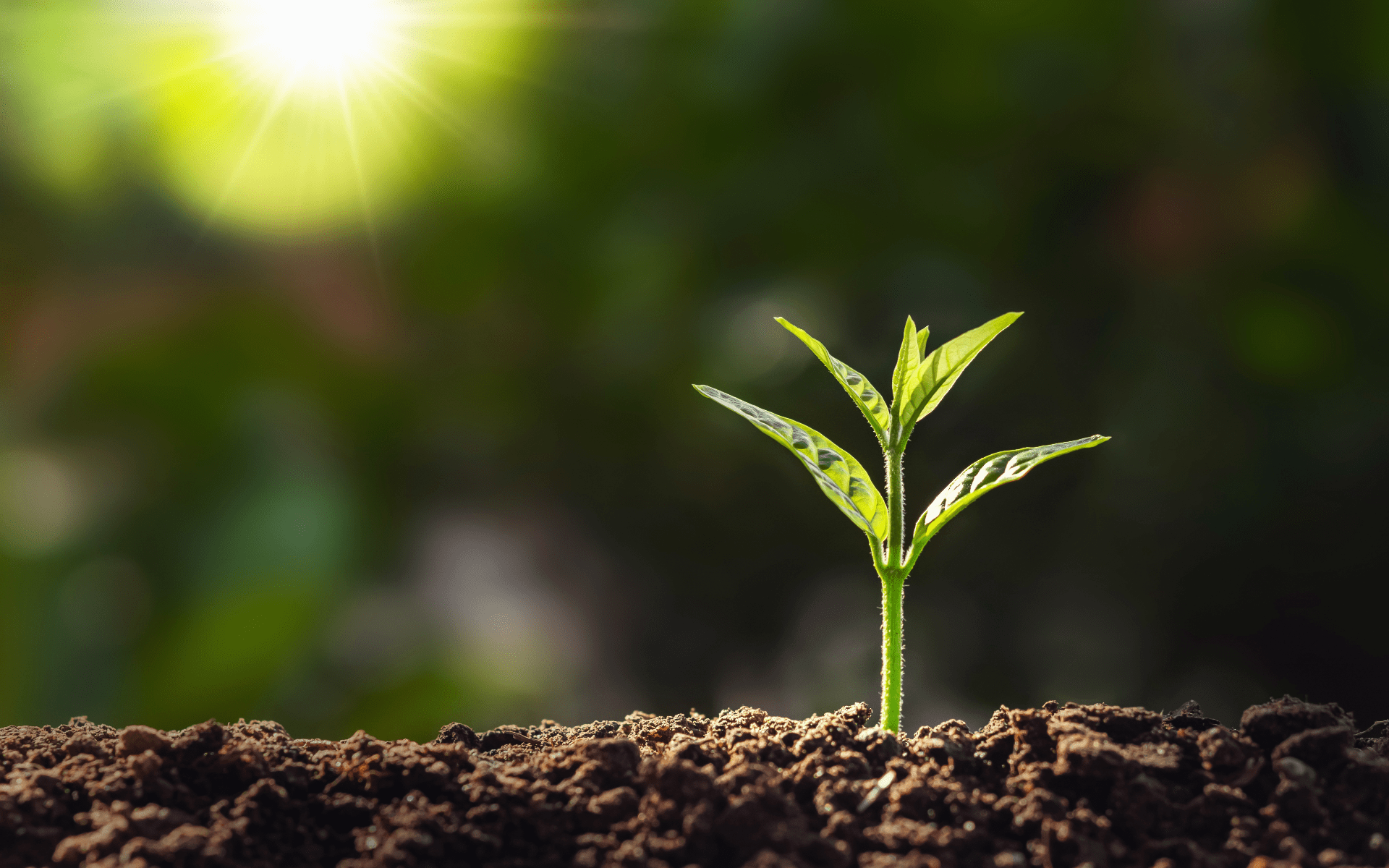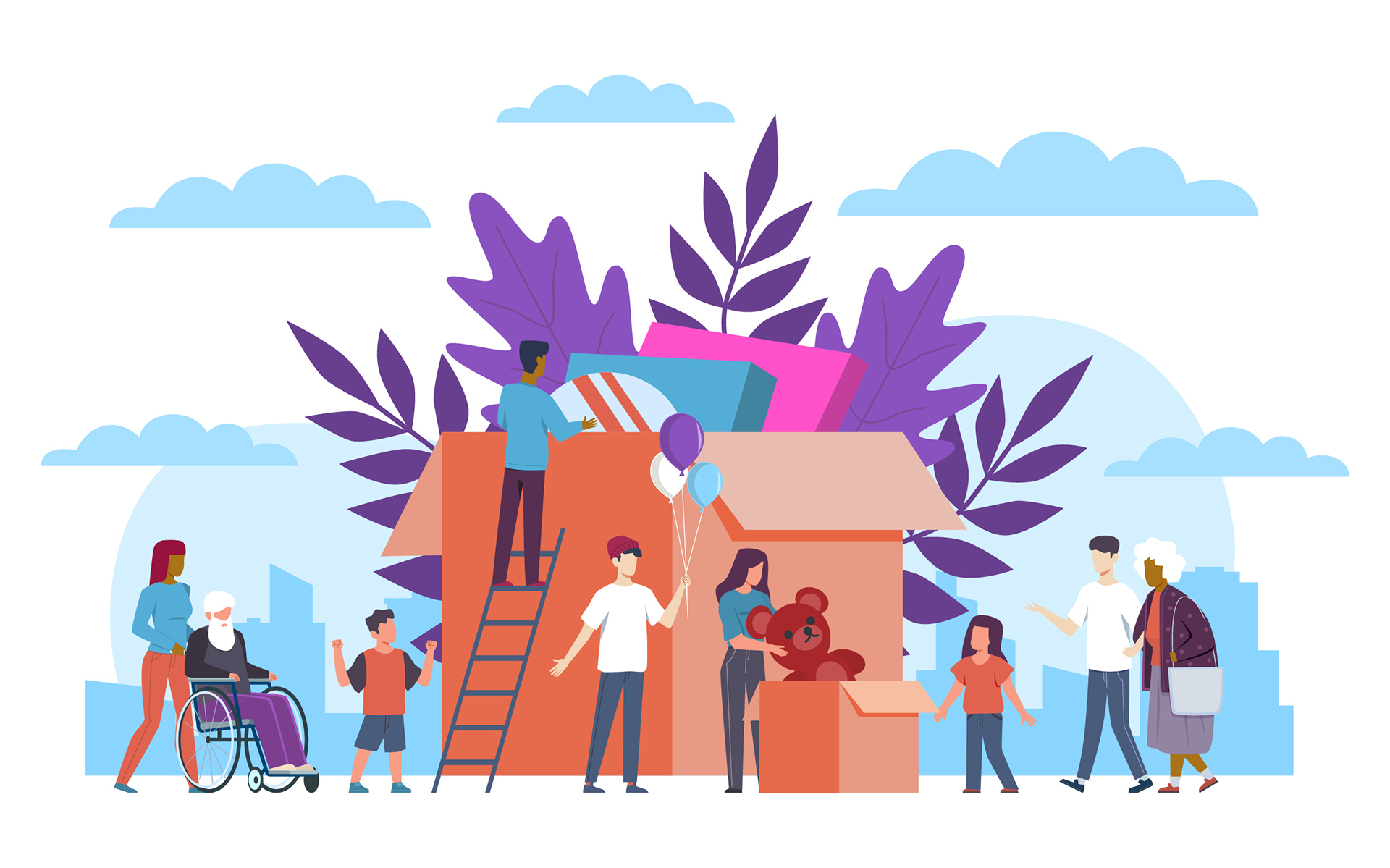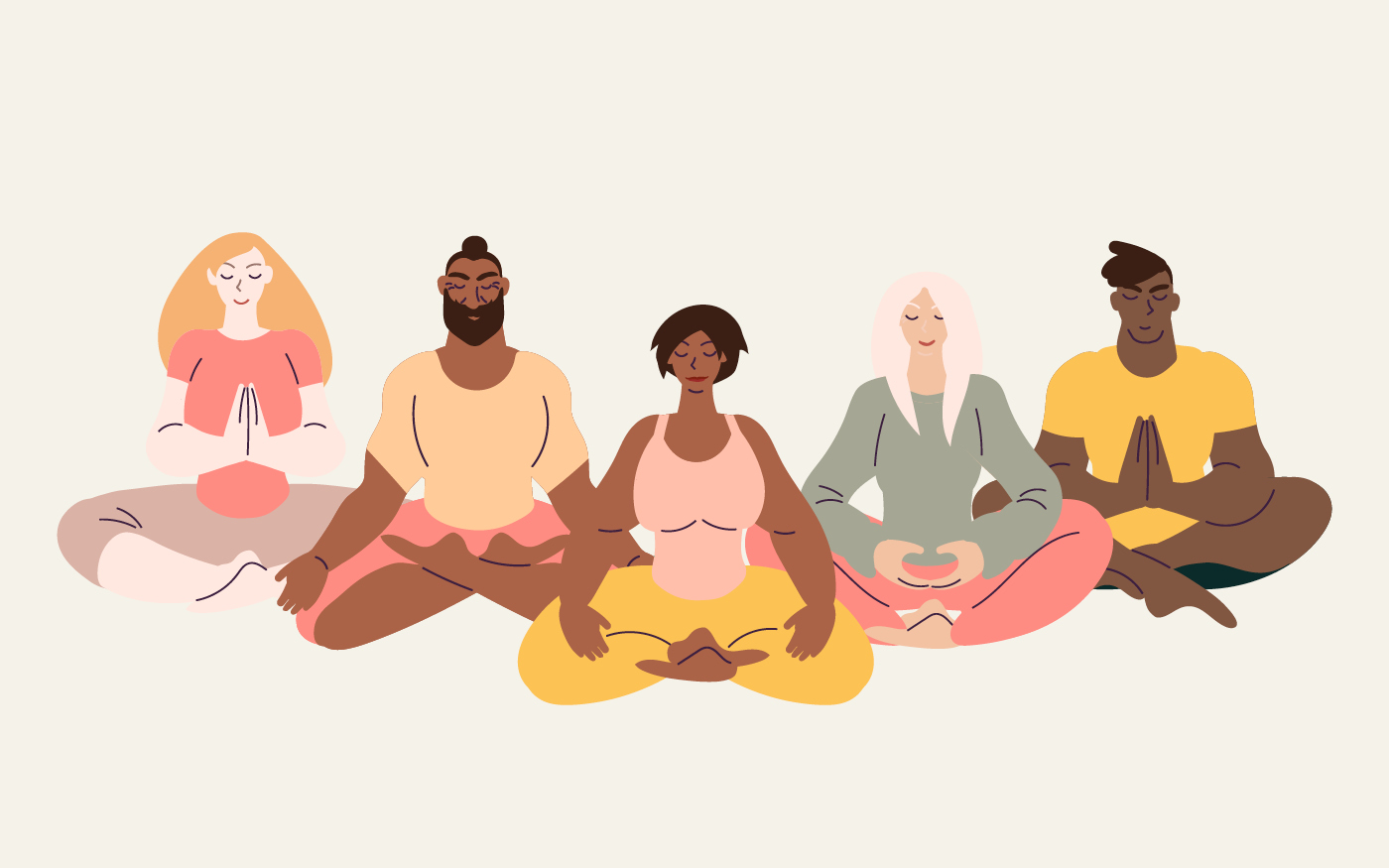The lodgepole pine cone is a curious thing. Squat and egg-shaped, the pine cone seals its symmetrical scales shut with a sticky resin, protecting precious seeds within.
Such a design appears to disadvantage the lodgepole. Survival seems slim when your seeds are locked in a botanical safe. And, yet, lodgepoles dot landscapes as wide-ranging as the wild, sparsely populated Yukon and the balmy coasts of Baja, California—growing in cold, wet winters and dry, hot summers.
Extreme heat such as that produced in wildfires, it turns out, is one of the magical keys that unlock the lodgepole’s seeds, scattering them to the ground. (The other is direct sunlight, of the kind rarely available in dense forests.) Lodgepoles don’t just survive catastrophes. They thrive in their aftermath.
As clever as the lodgepole’s propagation strategy is, its ingenuity is not unique. Endlessly inventive, unrelenting, and forever evolving, nature’s hallmark is resilience. Engineers, designers, and scientists have long looked to nature as a teacher, emulating its genius to innovate and improve upon human pursuits and inventions from wind turbines to bullet speed trains. The field of biomimicry, or biometrics, observes the way “nature uses diversity, redundancy, decentralization, and self-renewal and self-repair to foster resiliency,” as the Biomimicry Institute puts it. Japanese engineers designed the Shinkansen Bullet Train’s nose after the narrow, cone-shaped beak of the kingfisher, for instance, mimicking the bird’s ability to soundlessly dive into water and solving the train’s problem of creating sonic booms as it rushed into tunnels.
We too can apply nature’s wisdom to improve our mental, emotional, and physical well-being.
Of course, we can learn far more from nature than how to design faster trains. For around 3.8 billion years, nature and the millions of creatures who inhabit the planet’s humid jungles, sun-drenched deserts, forested mountain ranges, and expansive waterways have devised strategies to endure. We too can apply nature’s wisdom to improve our mental, emotional, and physical well-being, learning to adapt, collaborate, and renew ourselves so that we not only live more sustainably on earth, but also—like a towering lodgepole pine—we flourish in the face of adversity.
Adapt to Changing Conditions
In a bright, white-walled laboratory at Villanova University in Pennsylvania, a teal- and orange-spotted tokay gecko hangs upside down, effortlessly adhering to a vertical pane of glass.
Dr. Alyssa Stark, a Villanova biology professor, runs the lab. And for more than a century, scientists like Stark have been on a biological quest to understand the gecko’s remarkable adhesive capabilities. Densely packed, tiny hairs within the lizard’s toepads and stiff tendons in their feet grant them Spider-Man-like superpowers, allowing them to climb up walls, hang from ceilings, and stick to everything from sandpaper to wet Teflon. A five-inch tokay in Stark’s lab can produce an adhesive force equivalent to carrying 11 pounds, or the weight of a gallon of paint up a wall, without slipping.
More astonishing: The gecko didn’t always have this superpower.
“Geckos have independently evolved and lost their adhesive abilities multiple times,” says Stark, her voice animated with a mix of awe and enthusiasm.
The gecko not only embraces change, it flexibly adapts to the demands of its ever-evolving environment. It’s a theme that plays throughout nature, across ecosystems, and among the species who live within them. Languid three-toed sloths can swivel their heads up to 270 degrees to spot predators before they strike, thanks to the evolutionary gift of as many as three extra neck vertebrae. Gorillas’ teeth evolved to chew tough leaves when mushy fruit is scarce. And Red Crossbills fly hundreds of miles from their primary Pacific Northwest habitats when seeds are sparse in their hometowns.
We also need to adapt to changing conditions, and in this we can see nature as a teacher. Our tendency to bristle against change is as reflexive as an eye blink. And we’ve devised plenty of structures and systems to keep change at bay—particularly in industrialized countries where everything from air conditioning to DoorDash seeks to supersede nature’s inconveniences in the service of unending human comfort.
“We’ve been fed a story that the world is not changing,” says Danya Baumeister, an Arizona State University professor and cofounder of the Biomimicry 3.8 consultancy, which works with universities, organizations, and corporations like Nike and Patagonia to find solutions in nature to tricky design puzzles.
While we’ve learned to handle small, predictable change—taking shelter under umbrellas when it rains, flicking on lights when it’s dark—large, unpredictable events, such as global pandemics, upend us, revealing our reactive inflexibility and exposing our vulnerabilities.
We can’t prevent upheaval. But if we look to nature as a teacher, we can learn to become more resilient. We can start by identifying critical functions for well-being: food, shelter, work, occasional pleasures and recreation, and so on. Then, ensure we maintain them by duplicating the diversity, redundancy, and decentralization found in nature. Ecosystems—whether wetlands or deserts—contain a diversity of plants that are distributed across the landscape in a decentralized pattern. So, when a storm threatens, the ecosystem has a life insurance policy.
“We are hardwired to behave like nature because we are nature,” says Baumeister.
We can plan for contingencies, and adapt to what life serves us. Buying our groceries online and using curbside pickup during pandemic shutdowns, or planning birthday celebrations that don’t rely on gathering indoors, having socially distanced book-club meetings outdoors in lawn chairs six feet apart, or converting kitchens and living rooms into home offices and schoolrooms. And we can make those contingency plans stronger by turning to our networks—swapping childcare duties with another family in our bubble, borrowing a neighbor’s laptop when ours conks out, participating in mutual aid groups that have sprung up across the country. Like nature, we can endlessly problem solve and evolve.
And we may even find opportunity in change. For Carmen Ventrucci and her family, that meant finding a way to strengthen family bonds and have an enriching experience, even during a chaotic time. Ventrucci, a leadership coach in Mendota Heights, Minnesota, was grateful to be in a position to take advantage of change when her school district gave parents the option of distance learning during the pandemic. She and her husband were able to rent out their home and take their six kids and dog on the road, living, working, and going to school in a recreational vehicle towed behind their Chevy Yukon. Equipped to troubleshoot everything from patchy internet to COVID-19 outbreaks, the family hit the road for nine months in hopes of creating a memorable adventure in the midst of the pandemic.
Ventrucci knows nothing is guaranteed—and that her family is lucky to have the resources to respond to circumstances in this way. “Change is going to happen no matter who you are,” she says. “We’re creative enough to embrace whatever happens on the trip.” And, she adds, that includes her family changing its mind and coming home early if needed.
Cultivate Cooperative Relationships
Imprinted in our cultural imagination is the silhouette of a lone wolf against a blue-gray sky, howling at a dinner plate of a moon. But a different picture emerges in the dusty foothills of the Angeles National Forest, at Wolf Connection, an educational sanctuary and retreat center. There, 30 wolves rescued from fur farms or roadside attractions form a unique pack that teaches essential lessons of belonging to at-risk youth, families, and adults who participate in Wolf Connection’s therapeutic programs.
“A lone wolf is a dead wolf,” says Amanda Beer, Director of Programs for Wolf Connection. Relationships between wolves, who work together in a shared circle of leadership where even alpha males care for pups, provide potent examples of interdependence.
“Part of our self-protection as humans is to isolate,” says Beer. “But we have a primal need for connection.”
And nature is more connected, collaborative, and communal than we realize. Survival of the fittest refers not to the competitive strength of a species but to a species’ “fitness” to adjust to its changing environment.
Nature is more connected, collaborative, and communal than we realize. Survival of the fittest refers not to the competitive strength of a species but to a species’ “fitness” to adjust to its changing environment.
While conflicts arise between species jockeying for territory or food and during mating, they’re short-lived. It takes too much energy to fight. Instead, nature adapts through cooperative relationships.
Wolves work together as a pack to bring down prey that a single wolf couldn’t. Oxpeckers feeds off parasites on a rhino’s back while removing the pests from its hide. And 90% of flowering plants have relationships with mycorrhizal fungi that help colonize roots, passing nutrients to neighboring plants and trees in an underground network of connectivity called the wood-wide web.
Humans too are interconnected—consider how easily COVID-19 has spread and also how the social seclusion of the pandemic has taxed our mental health and reinforced our need for togetherness. The pandemic has also revealed our innate ability to collaborate for mutual suvival. Wearing masks, standing six feet apart, and getting vaccinated are forms of social solidarity—ways we work together to keep each other safe.
But in a high-tech world where digital connections often prevail over face-to-face friendships, human bonds fray. Even before social distancing, three in five adults reported they felt lonely, creating an epidemic of loneliness. The pervasive give and take that exists in nature offers us a model for how we might deepen friendships and create supportive networks.
Karen Allen, a restoration ecologist and biomimicry consultant, suggests we form relationships within the context of a helpful exchange and ask: How can I benefit a potential partner, friend, or colleague, and what do I need from them? Allen notes that relational exchanges in nature aren’t necessarily equivalent but they reward both parties.
A weathered flyer taped to lamp posts throughout a Los Angeles neighborhood puts Allen’s point in a human context. In bold red letters, the sign asks: “Are you OK?” and lists phone numbers for folks to call if they need help with grocery shopping, picking up a prescription, or if they just want to talk to someone. Whoever calls for help might appear to get more out of the exchange, but whoever answers the call will likely feel good for doing so.
Rest, Renew, and Regenerate
As wildfires blazed through the Western US in the fall of 2020, images of San Francisco under an apocalyptic sky filled the media. So, too, did news of forests, property, and lives lost to wildfire. But as fires quelled and smoky skies turned to faded denim, the scorched earth offered itself to new life. For millions of years, fires have been part of nature’s cycle of disruption and regeneration. Life on earth doesn’t evolve in a straight line. It oscillates, as gently as the ebb and flow of a low tide—or as cataclysmically as the destruction and rebirth of an old-growth forest.
“Life is hard, but it persists,” says Meg Krawchuk, an associate professor at the College of Forestry at Oregon State University. Looking out her office windows at maple trees waving in the wind, Krawchuk relays how species like maples inherited traits for rapid regrowth.
So much so, there are websites devoted to techniques for weeding maple seedlings from lawns, flowerbeds, sidewalk cracks, and gutters. Other opportunistic species leverage major disturbances to foster their growth, setting off a chain of events that sparks ecological renewal.
In the aftermath of a wildfire, lodgepole seedlings can be so numerous they cover the ground like a lime-green carpet. Ash-infused soil—rich with nutrients such as carbon, nitrogen, phosphorus, and potassium—nourishes plants such as the aptly named fireweed. Sunlight flooding onto forest floors once darkened by tree canopies feeds the fireweed’s pink flowers, fueling its spread. And black-backed woodpeckers forage for wood-boring beetles nesting in fallen trees that provide life long after their own death.
Nature breaks down, lets go, and allows the next succession of growth to continue. Human beings have a harder time with loss. We seldom greet life-shattering events such as divorce, job loss, or illness as periods of renewal and regrowth. But by observing nature’s cycles, embracing nature as a teacher, we can learn to accept the disruption and renewal that occurs in our lives. We can acknowledge the messy middle of transitions and the inevitable growth they foster.
Like a maple tree, extroversion might help us network for new employment and move on after a job loss. Or, like a lodgepole, a catastrophe might propel us into a new stage of growth. While we often hustle through transition, nature allows time for restoration. Trees shed their leaves, drawing in energy for winter dormancy and springtime renewal. Box turtles and bears enter torpor and hibernation. The sun rises and sets. Bound up in the busyness of life, we often ignore the wisdom of nature as a teacher that follows activity with rest.
“Rest is not work’s adversary,” writes author Alex Soojung-Kim Pang. “Rest is work’s partner. They complement and complete each other.”
If we pause, we might discover that our renewal not only mirrors nature but also lies within it—in the thick woods, gleaming oceans, and windswept chaparrals that beckon beyond our hurried lives.
When wildfires sullied the sky in her hometown of Bend, Oregon, giving restoration ecologist Karen Allen headaches and making her skin crawl, with deep gratitude for her circumstances, she was able to recharge as she always has. She drove three-and-a-half hours west through cascading mountains and low-lying valleys to the coast. At the shoreline, she pulled on her brown rubber boots, breathed deeply, and engaged her senses, wading in tide pools filled with emerald-green sea anemone.
On the way home, she stopped at an old-growth forest where western hemlock and douglas fir have stood for 500 years. Looking up at the trees’ imposing trunks and soaring limbs, she wondered how many fires, windstorms, and snow loads they’d survived.
She thought about the vast spans of time through which nature endures, and, in a moment of hopefulness, she thought that we, too, can withstand the tumult of life. We, too, can renew.
read more
7 Ways to Appreciate the Natural World
When we get intentional about noticing the details around us, we open ourselves up to the wonder, nourishment, and surprise that nature has to offer.
Read More
Finding Community (Where You Least Expect It)
Even when you feel disconnected, you’re part of something larger than yourself. Your community is not just who you already know—it flows in abundance when you’re in need.
Read More
What Is Possible When We Allow Ourselves to Feel Discouraged?
As much as we try to maintain a sense of positivity, we might find ourselves feeling defeated by the headlines in the news. Clinical psychologist Steve Hickman outlines three steps to turn that defeat into a driving force for action.
Read More








